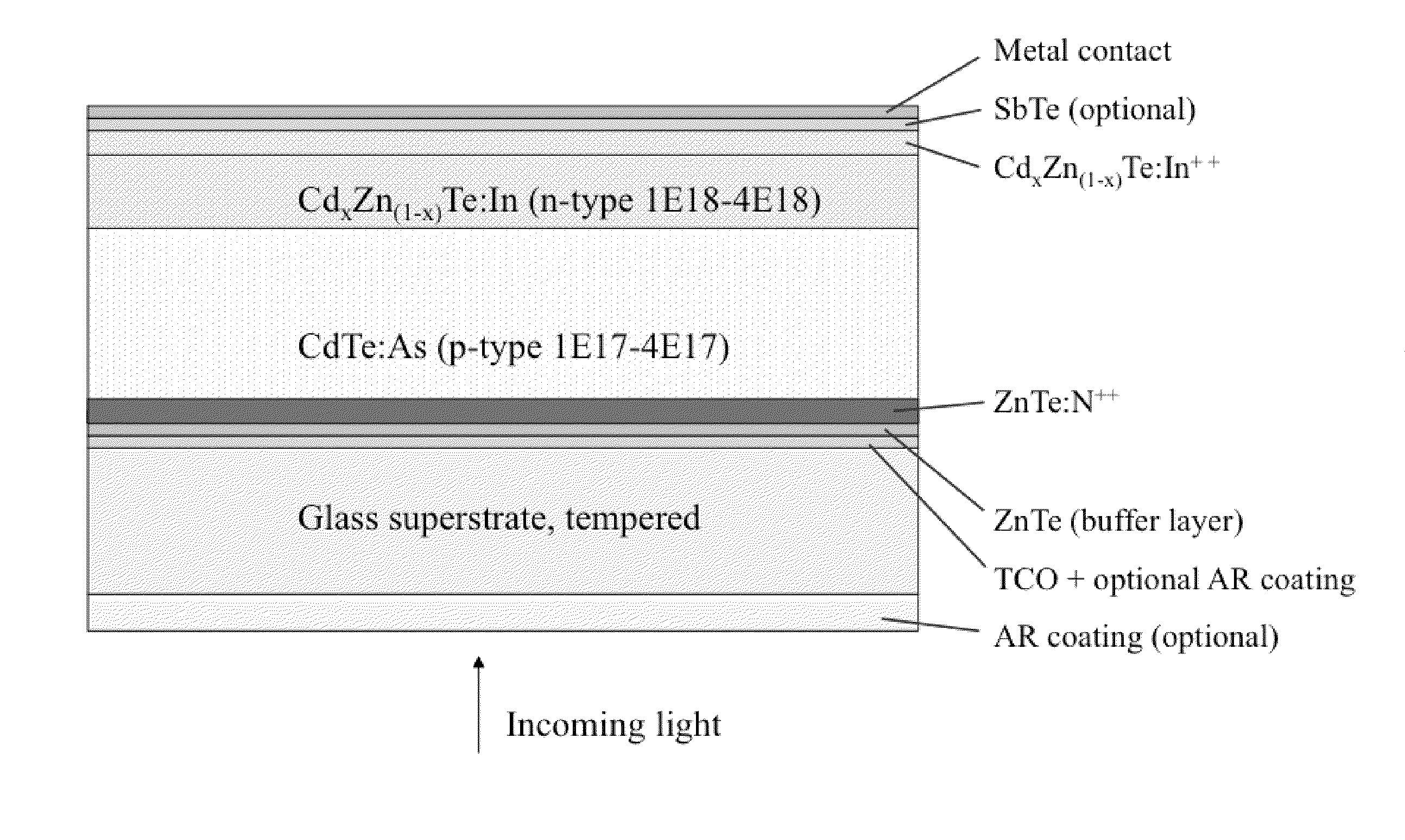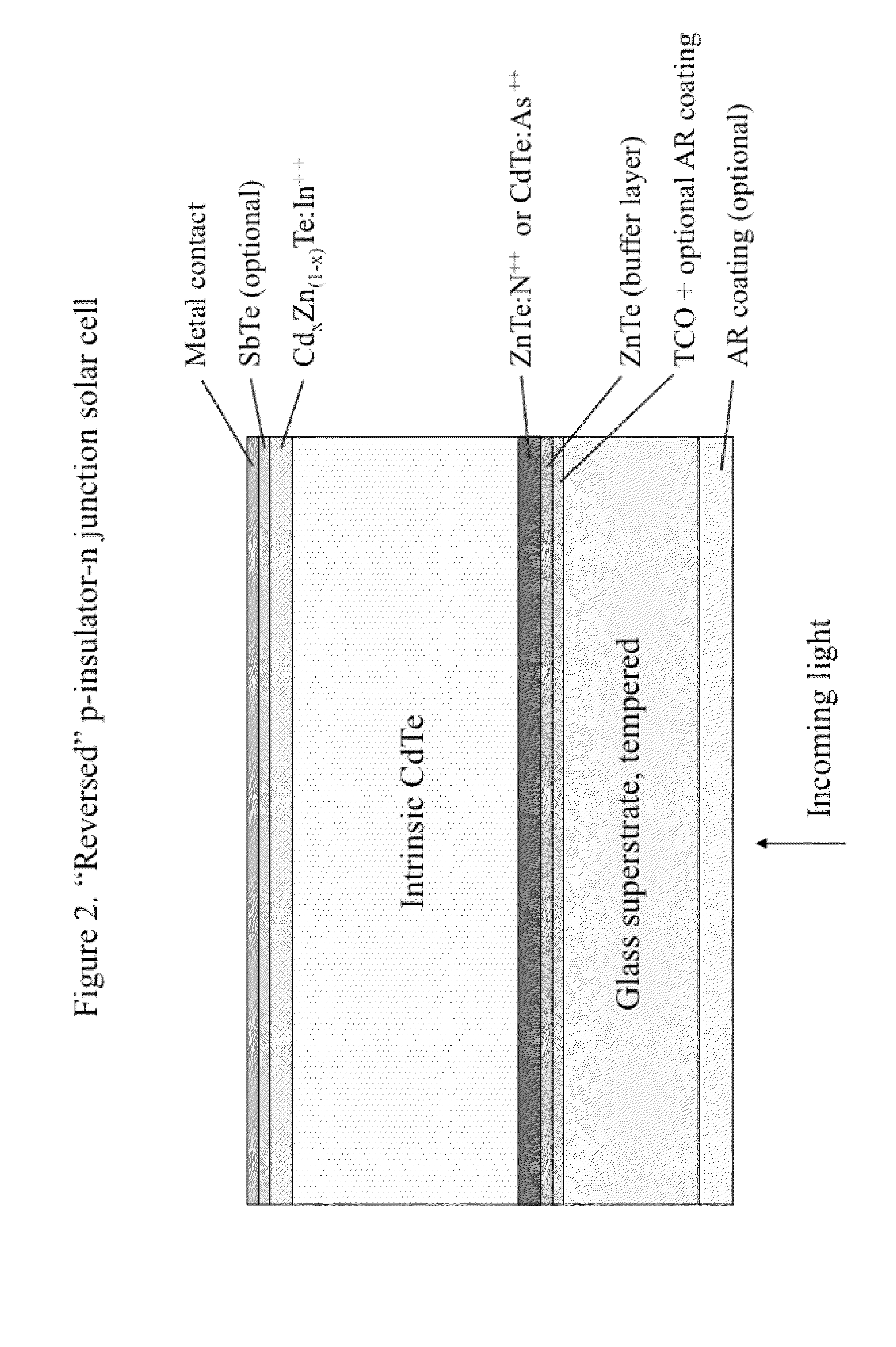High Power Efficiency, Large Substrate, Polycrystalline CdTe Thin Film Semiconductor Photovoltaic Cell Structures Grown by Molecular Beam Epitaxy at High Deposition Rate for Use in Solar Electricity Generation
a technology of solar electricity generation and thin film semiconductors, applied in thermoelectric devices, basic electric elements, final product manufacturing, etc., can solve the problems of high cost of production, low conversion efficiency of light to electricity, and difficult or inconvenient continuous electrical energy supply of pv cells available in the art, etc., to achieve high deposition rate polycrystalline growth, high precision control of layer thickness, and high performance
- Summary
- Abstract
- Description
- Claims
- Application Information
AI Technical Summary
Benefits of technology
Problems solved by technology
Method used
Image
Examples
Embodiment Construction
[0053]While various embodiments of the invention have been shown and described herein, it will be obvious to those skilled in the art that such embodiments are provided by way of example only. Numerous variations, changes, and substitutions will now occur to those skilled in the art without departing from the invention. It should be understood that various alternatives to the embodiments of the invention described herein may be employed in practicing the invention.
[0054]In current thin film photovoltaic cells, such as CdTe or CIGS, a CdS “window” layer is used because it is an intrinsically n-type material. Because current process technologies used in production do not provide the capability of doping photovoltaic structures in situ (i.e., real time in the deposition chamber), those of skill in the art use a material with high intrinsic n-type doping, such as CdS, to define the n-type layer of the p-n junction. But there are limitations associated with using CdS. For example, CdS (a...
PUM
 Login to View More
Login to View More Abstract
Description
Claims
Application Information
 Login to View More
Login to View More - R&D
- Intellectual Property
- Life Sciences
- Materials
- Tech Scout
- Unparalleled Data Quality
- Higher Quality Content
- 60% Fewer Hallucinations
Browse by: Latest US Patents, China's latest patents, Technical Efficacy Thesaurus, Application Domain, Technology Topic, Popular Technical Reports.
© 2025 PatSnap. All rights reserved.Legal|Privacy policy|Modern Slavery Act Transparency Statement|Sitemap|About US| Contact US: help@patsnap.com



